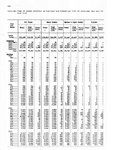Hello FlyboyJ
Even if I think that B-29 was the best bomber used during WWII, I'd not say that it
"could more than take care if itself." If that was true why the need for escort fighters and why the bombing campaign was so expensive in men and machines. Of course one reason was the unreliability of R-3350 engines but there were also many losses to Japanese fighters.
And Lancaster Specials could carry 5 and 10 tons bombs, so Lanc had the lifting capacity but not the range.
"The B-29 was a technology a head of the Lancaster in all aspects of systems, operations and performance"
I agree that but B-29 still lacked reliability even if they found out ways to minimize the strain to engines and so improve the reliability.
I still agree with that that B-29 was the best bomber of WWII.
Juha
Even if I think that B-29 was the best bomber used during WWII, I'd not say that it
"could more than take care if itself." If that was true why the need for escort fighters and why the bombing campaign was so expensive in men and machines. Of course one reason was the unreliability of R-3350 engines but there were also many losses to Japanese fighters.
And Lancaster Specials could carry 5 and 10 tons bombs, so Lanc had the lifting capacity but not the range.
"The B-29 was a technology a head of the Lancaster in all aspects of systems, operations and performance"
I agree that but B-29 still lacked reliability even if they found out ways to minimize the strain to engines and so improve the reliability.
I still agree with that that B-29 was the best bomber of WWII.
Juha

